Peace in Colombia: The Tale of Bojayá





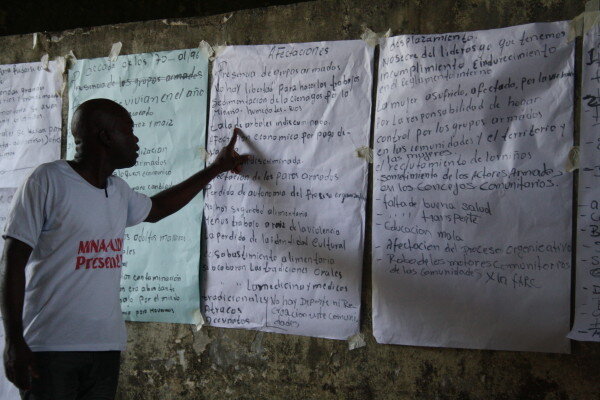
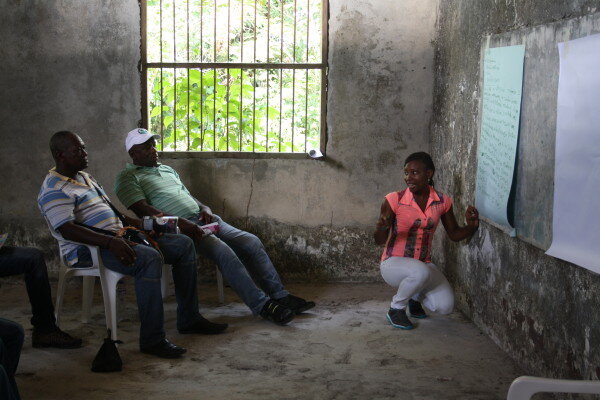
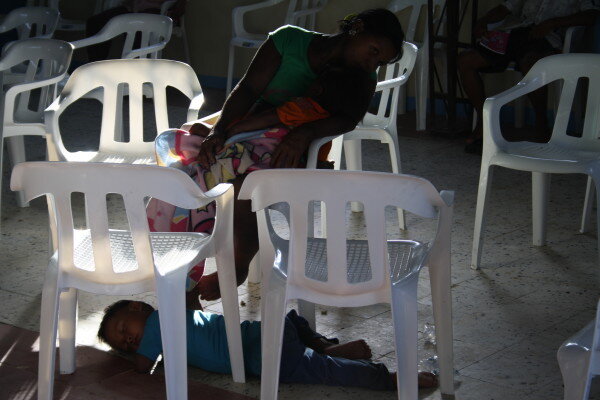
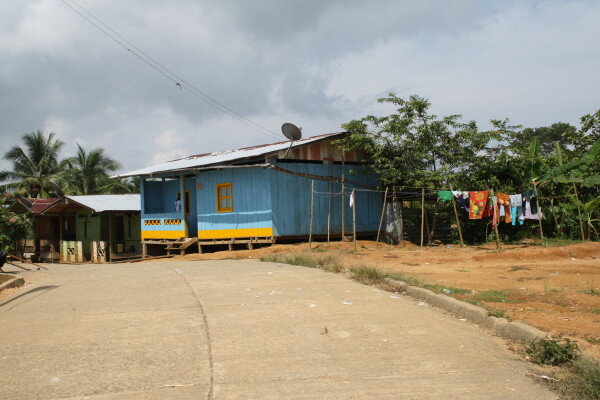
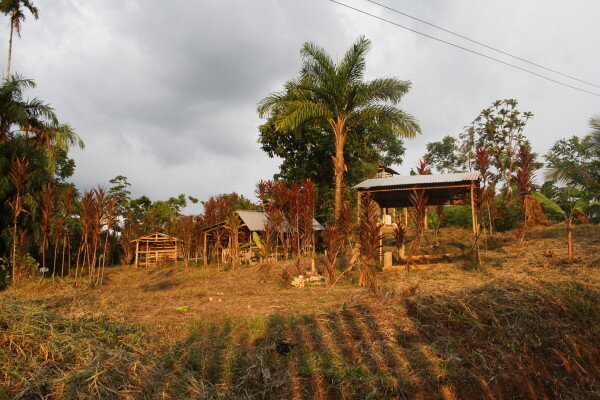
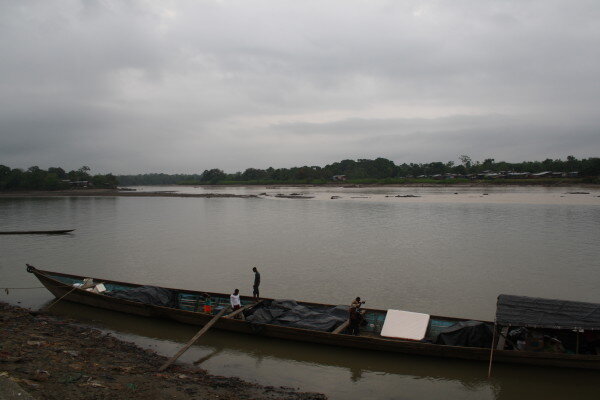
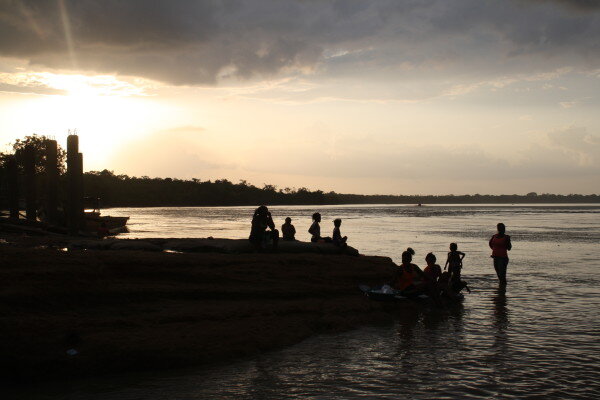

By Sofía del Carril and Míriam Juan-Torres
May 2002 - After days of fighting between the paramilitaries and the Revolutionary Armed Forces of Colombia (FARC), the inhabitants of Bojayá, in the department of Chocó, sought refuge in the town’s church. The Colombian army was fully aware of what was happening, but nowhere to be seen. In the crossfire, a cylinder bomb fired by the FARC hit the church, killing seventy-nine civilians, including forty-five children, and leaving dozens injured.[1]
Photo 12. At sunset, kids take a bath and women clean clothes in the river. The Atrato is highly contaminated due to illegal mining activity. On the back, a boat heads toward the old Bojayá.
This massacre, like many others during Colombia’s internal armed conflict, could have been avoided. The regional ombudsman and the United Nations had both asked the army to intervene in Bojayá, but the Colombian armed forces only arrived at the town four days after the massacre occurred. As in countless other occasions, factors such as its collusion with the paramilitaries help explain why the army failed to fulfill its duty of protecting civilians. Following this tragedy, Bojayá was abandoned and the entire population relocated a few miles south to a newly founded town, Bellavista.
December 2015. More than thirteen years later, in a symbolic gesture, the FARC returned to the abandoned town to ask forgiveness for the massacre, and the loss and pain it caused.[2] This was one of a series of events that have been taking place in the context of the peace talks between the FARC and the Colombian government. The parties have been engaged in peace negotiations in Havana, Cuba since 2012. In what seems to be the most promising peace process to date, they have steadily reached agreement on many of the points that were set four years ago.
Many challenges lie ahead. For more than five decades, Colombia has been immersed in an internal armed conflict that caused at least 220,000 deaths since 1958.[3] Even if a peace agreement is reached in the near future, criminality and poverty are likely to remain high. With a Gini coefficient well above the UNDP’s 0.40 “alarm boundary,” regional disparities still take their toll on a large segment of the population. The presence of the state remains marginal in several regions, with the provision of public services lacking to non-existent in some areas. The Chocó is emblematic in this respect and reflects the huge contrasts within the country. One of the regions most affected by armed conflict, it is Colombia’s poorest department and is mainly populated by two minorities: the Afro-Colombians and the Embera indigenous community. In parts of rural Chocó, the local population still has to cope with the presence of paramilitaries, criminal gangs, and guerrillas (including the ELN).
It has been more than fifty years since the internal armed conflict began. Sparking hope and engaging Colombians in the peace process remain the biggest challenges confronting the parties. At the same time, the government certainly needs to be cautious in managing expectations. But if the events in Bojayá tells us something, it is that this peace process is different from the previous failed attempts. With the victims and citizens participating and if there is political will, Bojayá’s forgiveness ceremony may be a harbinger of a more peaceful Colombia.
Editor’s Note: Photo 12 cannot be viewed in the slideshow due to its size. (3/18/2020)
About the Authors
Sofía del Carril holds a law degree from Universidad di Tella in Argentina. Míriam Juan-Torres earned her LLB from Universitat Autònoma de Barcelona in Spain. Sofía and Míriam are both second-year MA students at the Jackson Institute for Global Affairs, and spent the summer of 2015 working for the United Nations in Colombia.
Endnotes
Gonzalo Sánchez G., “Bojayá: La Guerra Sin Límites,” Centro de Memoria Histórica (2010), last accessed March 15th, 2016, http://www.centrodememoriahistorica.gov.co/descargas/informes2010/informe_bojaya.pdf
Sally Palomino, “Las FARC piden perdón en Bojayá por su peor masacre,” El País, December 9, 2015.
Gobierno de Colombia, Centro Nacional de Memoria Histórica, ¡Basta ya! Colombia: memorias y dignidad, Informe general Grupo de Memoria Histórica (Bogotá: Imprenta Nacional, 2013).
